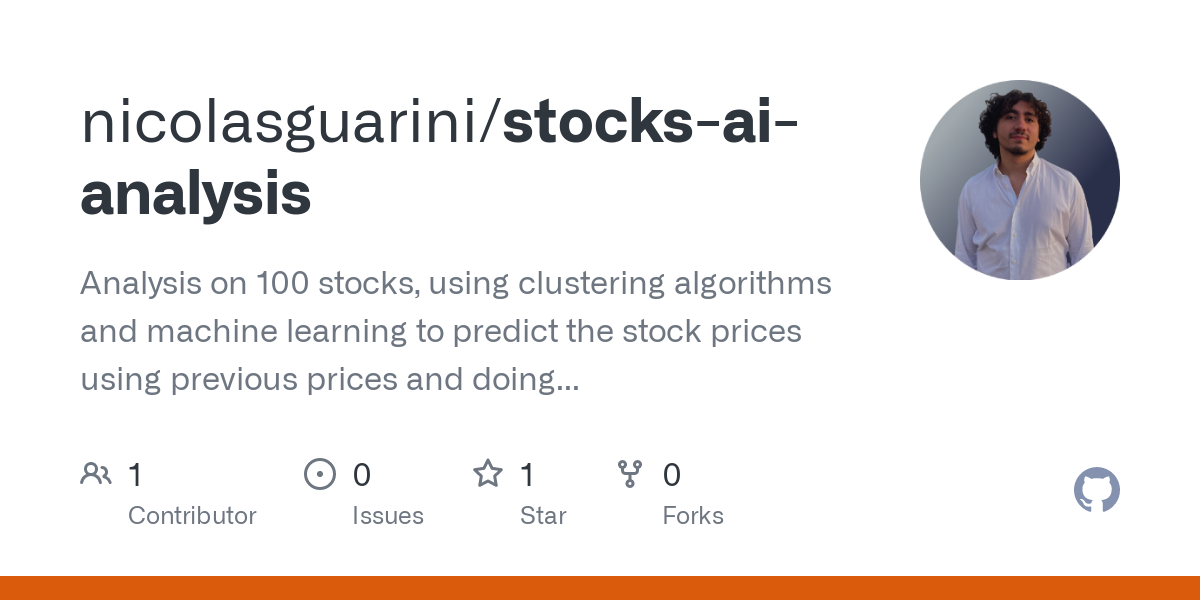20 Good Suggestions For Choosing Ai Stocks To Invest In
20 Good Suggestions For Choosing Ai Stocks To Invest In
Blog Article
Top 10 Tips To Stay Up To Date With Regulations For Ai Stock Trading From Penny To copyright
To ensure that AI stock trading is in compliance, you must stay abreast of all regulations. This is especially true for unstable markets such as penny shares and copyright. Regulations affect the strategies for trading, asset values, and more. Ten tips to stay up-to-date on regulations in the traditional and copyright markets.
1. Be sure to follow the the Regulatory Authorities and Agencies
Keep an eye out for updates from regulators
For penny Stocks, U.S. Securities and Exchange Commission and Financial Conduct Authority of the UK.
For copyright: U.S. Commodity Futures Trading Commission (CFTC), SEC (for the classification of copyright) and international regulators like the European Securities and Markets Authority (ESMA).
What they do: They publish updates, news, as well as enforcement actions that impact market regulations.
2. Subscribe to Financial News Outlets
Join reliable financial news services and sources that are focused on changes in the regulatory landscape.
To get news about copyright for copyright news, you can utilize Bloomberg, Reuters The Wall Street Journal CoinDesk and The Block.
Why: Financial media outlets often release news of regulatory changes early, so you can stay informed.
3. Join Industry Associations and Forums
Tip Take advantage of forums or groups in your field that regularly update you on regulatory issues.
For Stocks: CFA Institute, SIFMA (Securities Industry and Financial Markets Association).
copyright-centric trade groups include Blockchain Association, CryptoCouncil and other groups.
What they do: They share insights, offer webinars, and offer guidance on upcoming regulations.
4. Track Legislative Developments
Follow the pending legislation and regulatory proposals related to financial markets and copyright in your country.
Keep an eye out for any information concerning market manipulations and trading methods.
Stay on top of copyright: Make sure you keep an eye out for legislative changes affecting stablecoins, digital assets, as well as taxation of copyright.
The reason: Legislative changes frequently signal future shifts in the regulatory frameworks which could impact your plan.
5. Utilize platforms that are legal and regulated
Tip: Track legal and regulation changes in the copyright and financial sectors using platforms.
For Stocks: Law360, LexisNexis.
copyright Regulatory News and CoinTelegraph: For copyright.
Why? These platforms provide immediate alerts as well as in-depth analyses on regulations that might impact your trading.
6. Be sure to follow market analysts and legal experts.
Check out the Twitter and Facebook accounts of experts or legal analysts who specialize in legal regulations pertaining to copyright and financial transactions.
Follow SEC analysts and financial experts on Twitter or LinkedIn to learn more about penny stocks as well as the traditional market.
copyright Influencers in the copyright regulatory world, look for lawyers and analysts.
The reason is that these experts can provide you with current insights into complex regulatory change.
7. Keep track of updates from brokers and exchanges.
Tip: Check your trading platforms or brokers frequently to determine the latest information on compliance with regulations.
copyright Exchanges like copyright, copyright copyright and copyright regularly release compliance updates.
Brokers such as E*TRADE Charles Schwab and TD Ameritrade often provide information about trading restrictions.
The reason is that exchanges are able to respond faster to changes in regulations than the market in general. They can offer valuable insights into the changing legal standards.
8. AI can be used to evaluate risk to regulatory oversight
Tip: Add AI tools which analyze and monitor the risk factors that affect regulatory compliance in all industries. AI is able to scan government documents as well as news sources and legal databases.
The reason: AI can identify regulatory risks or trends before they become common, allowing you the opportunity to adjust your plan of action.
9. Keep up-to-date with tax laws
Be aware of the changes in tax laws which affect both stocks and copyright investments.
Stocks: Stay up-to-date with the most recent updates on tax laws, the latest reporting rules, as well as tax-loss harvesting.
For copyright: Be familiar with taxation rules relating to copyright transactions.
Tax regulations can have a significant effect on net income, especially due to the growing interest in copyright-taxation.
10. Participate in webinars and Conferences
Participate in webinars, online conferences as well as events in person focused on financial and copyright regulations.
Examples include conferences and webinars that are hosted by the SEC and CFTC.
The reason: Industry conferences are a good way to get direct feedback from regulators as well as gain insights from experts on upcoming changes to the regulatory system.
Bonus: Automate Compliance Monitoring
Utilize AI-based compliance tools to automate the process of observing any regulatory changes that might affect your company.
The reason: Automating Compliance lets you keep up to date with no manual process. It ensures that your system for trading automatically adjusts to any changes in legal requirements.
By following these guidelines, you can ensure that you are compliant with the current regulations for trading penny stocks and cryptocurrencies. Staying informed and proactive will minimize legal risks and help you make the most of opportunities in a controlled environment. View the best ai trading software hints for more info including ai for stock market, best copyright prediction site, ai trade, trading chart ai, ai trading, incite, ai stocks to invest in, ai stocks to buy, trading chart ai, ai stock picker and more. 
Top 10 Tips To Benefit From Ai Backtesting Tools For Stock Pickers And Forecasts
It is essential to employ backtesting efficiently to optimize AI stock pickers and enhance investment strategies and forecasts. Backtesting can allow AI-driven strategies to be tested in the previous market conditions. This gives insight into the effectiveness of their strategies. Here are ten top tips to backtest AI stock selection.
1. Use high-quality historic data
Tips: Ensure that the tool you use to backtest uses complete and precise historic data. This includes prices for stocks as well as dividends, trading volume and earnings reports, as in addition to macroeconomic indicators.
The reason is that quality data enables backtesting to be able to reflect market conditions that are realistic. Incomplete or inaccurate data can result in results from backtests being incorrect, which can compromise the credibility of your plan.
2. Add Realistic Trading and Slippage costs
TIP: When you backtest, simulate realistic trading expenses such as commissions and transaction costs. Also, think about slippages.
Reason: Failing to account for trading and slippage costs can lead to an overestimation of potential return from the AI model. The inclusion of these variables helps ensure your results in the backtest are more precise.
3. Tests in a variety of market situations
Tip Use the AI stock picker through a variety of market conditions. This includes bear market, and high volatility periods (e.g. financial crisis or corrections in the market).
What's the reason? AI model performance could be different in different markets. Examining your strategy in various conditions will show that you have a robust strategy that can be adapted to market fluctuations.
4. Utilize Walk Forward Testing
TIP: Make use of the walk-forward test. This is the process of testing the model with an open window of historical data that is rolling, and then confirming it with data that is not part of the sample.
Why: Walk-forward tests help assess the predictive powers of AI models based upon untested evidence. This is a more accurate gauge of the performance of AI models in real-world conditions than static backtesting.
5. Ensure Proper Overfitting Prevention
TIP: Try testing the model in different time frames to avoid overfitting.
Overfitting occurs when a system is too closely tailored for historical data. It is less able to forecast future market changes. A balanced model should be able to generalize across a variety of market conditions.
6. Optimize Parameters During Backtesting
TIP: Make use of backtesting tools for optimizing the key parameters (e.g., moving averages, stop-loss levels, or position sizes) by adjusting them iteratively and then evaluating the effect on the returns.
The reason optimizing these parameters could improve the AI model's performance. As mentioned previously it is crucial to make sure that this optimization doesn't result in overfitting.
7. Drawdown Analysis and Risk Management - Incorporate them
Tip : Include risk management tools such as stop-losses (loss limits) and risk-to-reward ratios and position sizing in back-testing strategies to gauge its strength to massive drawdowns.
How do you know? Effective risk management is essential to long-term success. By simulating your AI model's approach to managing risk and risk, you'll be able to detect any weaknesses and modify the strategy accordingly.
8. Determine key metrics, beyond return
Tip: Focus on key performance indicators beyond the simple return, such as Sharpe ratio, maximum drawdown, win/loss, and volatility.
Why: These metrics help you understand your AI strategy’s risk-adjusted performance. Relying solely on returns may miss periods of high volatility or risk.
9. Test different asset classes, and strategies
TIP: Re-test the AI model using a variety of types of assets (e.g. ETFs, stocks, copyright) and different strategies for investing (momentum, mean-reversion, value investing).
Why: Diversifying the backtest across various asset classes allows you to assess the scalability of the AI model, and ensures that it works well across multiple market types and styles that include risky assets such as copyright.
10. Refresh your backtesting routinely and refine the approach
Tip: Continuously upgrade your backtesting system with the latest market information and ensure that it is constantly evolving to adapt to changing market conditions and the latest AI model features.
Why: Because markets are constantly changing and so is your backtesting. Regular updates will make sure that your AI model is efficient and current when market data changes or new data is made available.
Bonus Monte Carlo simulations could be used for risk assessments
Tip: Monte Carlo Simulations are a great way to model various possible outcomes. You can run several simulations with each having a different input scenario.
Why? Monte Carlo Simulations can help you determine the probability of different outcomes. This is particularly useful for volatile markets like cryptocurrencies.
Follow these tips to evaluate and improve the performance of your AI Stock Picker. The process of backtesting will ensure that your AI-driven investment strategies are dependable, stable and able to change. Check out the top ai stock for blog recommendations including ai trade, ai stock trading bot free, ai trade, incite, ai trade, ai stock picker, ai copyright prediction, ai for trading, trading chart ai, ai stock analysis and more.